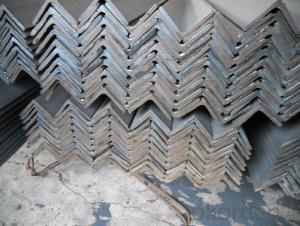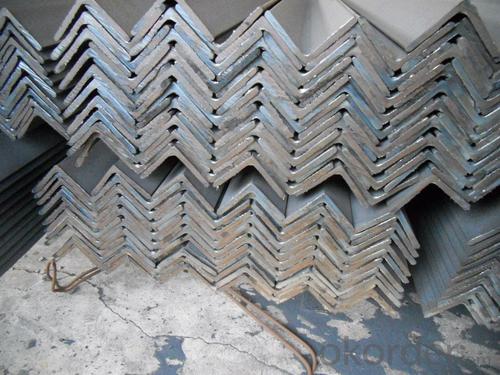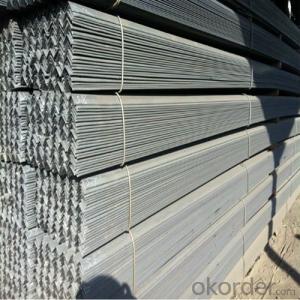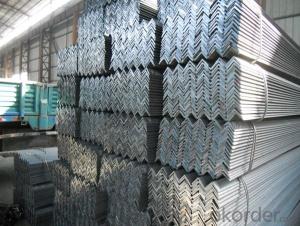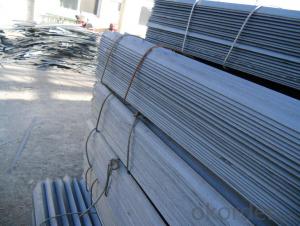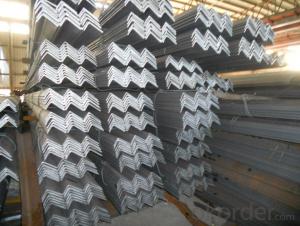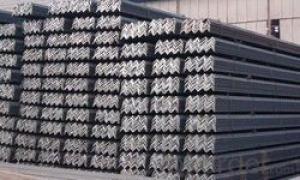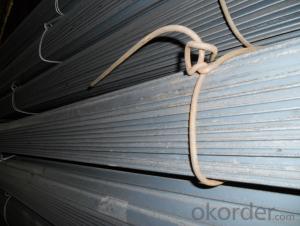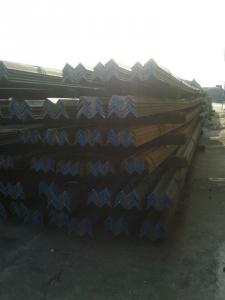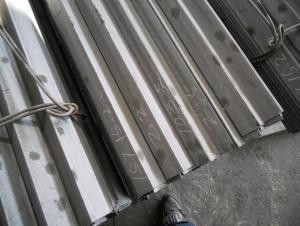MS Hot Rolled Low Carbon Alloy Steel Equal Angle
- Loading Port:
- China main port
- Payment Terms:
- TT OR LC
- Min Order Qty:
- 100 m.t.
- Supply Capability:
- 10000 m.t./month
OKorder Service Pledge
OKorder Financial Service
You Might Also Like
Specification
Product Description:
OKorder is offering MS Hot Rolled Low Carbon Alloy Steel Equal Angle at great prices with worldwide shipping. Our supplier is a world-class manufacturer of steel, with our products utilized the world over. OKorder annually supplies products to African, South American and Asian markets. We provide quotations within 24 hours of receiving an inquiry and guarantee competitive prices.
Product Applications:
MS Hot Rolled Low Carbon Alloy Steel Equal Angle are ideal for structural applications and are widely used in the construction of buildings and bridges, and the manufacturing, petrochemical, and transportation industries.
Product Advantages:
OKorder's MS Hot Rolled Low Carbon Alloy Steel Equal Angle are durable, strong, and wide variety of sizes.
Main Product Features:
· Premium quality
· Prompt delivery & seaworthy packing (30 days after receiving deposit)
· Can be recycled and reused
· Mill test certification
· Professional Service
· Competitive pricing
Product Specifications:
Manufacture: Hot rolled
Grade: Q195 – 235
Certificates: ISO, SGS, BV, CIQ
Length: 6m – 12m, as per customer request
Packaging: Export packing, nude packing, bundled
EQUAL ANGLES SIZES | |||
a(mm) | a1(mm) | thickness(mm) | length |
25 | 25 | 2.5---3.0 | 6M/12M |
30 | 30 | 2.5---4.0 | 6M/12M |
38 | 38 | 2.5 | 6M/12M |
38 | 38 | 3.0---5.0 | 6M/12M |
40 | 40 | 3.0---6.0 | 6M/12M |
50 | 50 | 3 | 6M/12M |
50 | 50 | 3.7---6.0 | 6M/9M/12M |
60 | 60 | 5.0---6.0 | 6M/9M/12M |
63 | 63 | 6.0---8.0 | 6M/9M/12M |
65 | 65 | 5.0---8.0 | 6M/9M/12M |
70 | 70 | 6.0---7.0 | 6M/9M/12M |
75 | 75 | 5.0---10.0 | 6M/9M/12M |
80 | 80 | 6.0---10.0 | 6M/9M/12M |
90 | 90 | 6.0---10.0 | 6M/9M/12M |
100 | 100 | 6.0---12.0 | 6M/9M/12M |
120 | 120 | 8.0-12.0 | 6M/9M/12M |
125 | 125 | 8.0---12.0 | 6M/9M/12M |
130 | 130 | 9.0-12.0 | 6M/9M/12M |
140 | 140 | 10.0-16.0 | 6M/9M/12M |
150 | 150 | 10---15 | 6M/9M/12M |
160 | 160 | 10---16 | 6M/9M/12M |
180 | 180 | 12---18 | 6M/9M/12M |
200 | 200 | 14---20 | 6M/9M/12M |
FAQ:
Q1: Why buy Materials & Equipment from OKorder.com?
A1: All products offered byOKorder.com are carefully selected from China's most reliable manufacturing enterprises. Through its ISO certifications, OKorder.com adheres to the highest standards and a commitment to supply chain safety and customer satisfaction.
Q2: How do we guarantee the quality of our products?
A2: We have established an advanced quality management system which conducts strict quality tests at every step, from raw materials to the final product. At the same time, we provide extensive follow-up service assurances as required.
Q3: what is the difference between actual weight and theoretical weight?
A3: All the section steel has two weights: actual weight and theoretical weight. Actual weight is the weighing out when the product delivered from the mill. Theoretical weight is calculated by pieces. The invoice can be based on each of them as your request.
Images:
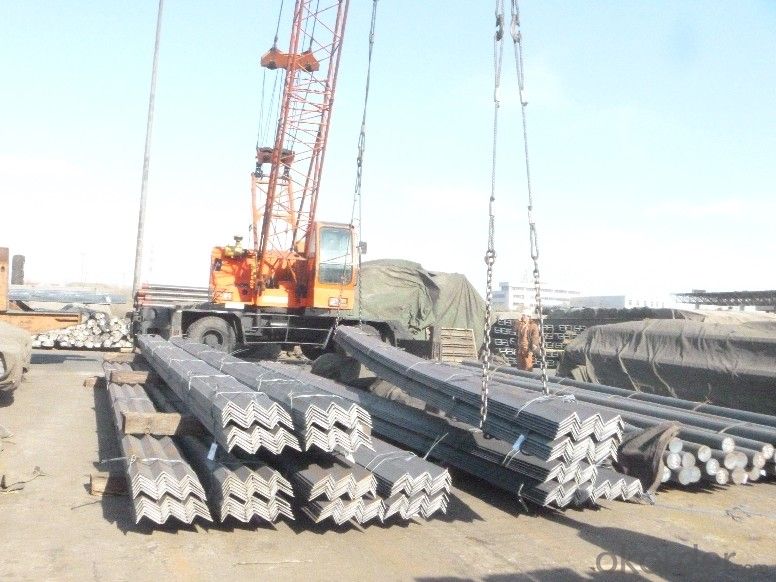
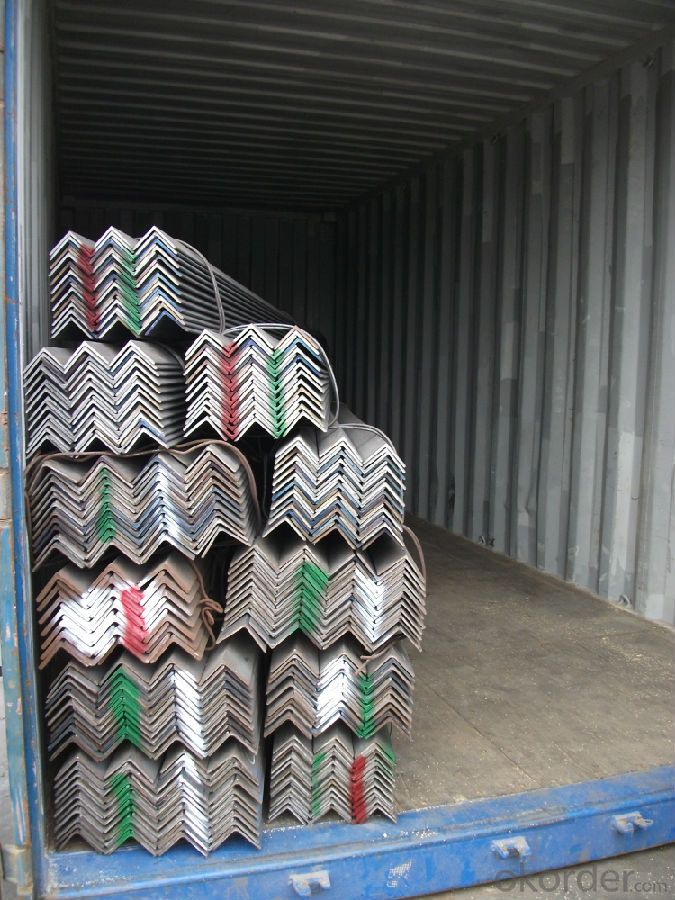
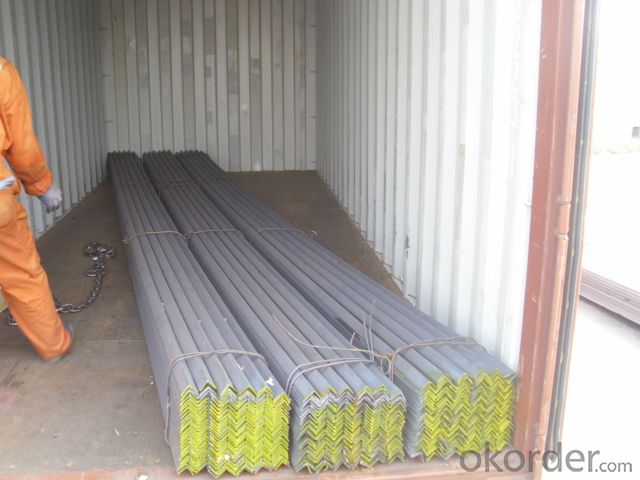
- Q: Can steel angles be used for wall bracing?
- Yes, steel angles can be used for wall bracing. Steel angles are commonly used in construction for providing structural support and reinforcement. They are often used to brace walls and provide stability to the structure. Steel angles are strong and durable, making them an ideal choice for wall bracing applications. Additionally, they can be easily fabricated and installed, making them a cost-effective solution for wall bracing needs.
- Q: What are the different fabrication techniques used for steel angles?
- There are several different fabrication techniques used for steel angles, including hot rolling, cold rolling, and welding. Hot rolling involves heating the steel to a high temperature and then passing it through rollers to shape it into the desired angle. Cold rolling, on the other hand, involves shaping the steel at room temperature using rollers. Welding can also be used to fabricate steel angles by joining two or more pieces of steel together using heat and pressure. These different techniques allow for the production of steel angles with varying thicknesses, sizes, and shapes to meet specific project requirements.
- Q: What are the common lengths available for steel angles?
- The common lengths available for steel angles vary, but they typically range from 20 feet to 40 feet.
- Q: Can steel angles be used for reinforcement in concrete structures?
- Yes, steel angles can be used for reinforcement in concrete structures. They are commonly used to provide additional strength and stability to concrete elements such as beams, columns, and slabs. Steel angles are often incorporated as reinforcement to resist bending, shear, and torsional forces, enhancing the overall structural integrity of the concrete elements.
- Q: What are steel angles?
- Steel angles are a type of steel structural shape that is commonly used in construction and engineering projects. They are L-shaped beams with two legs of equal or unequal length, forming a 90-degree angle. Steel angles are typically made from hot-rolled steel and can be found in various sizes and thicknesses. These angles are versatile and have a wide range of applications. They are commonly used as framing elements in buildings and bridges, providing support and stability. Steel angles can also be used as reinforcement in concrete structures or as brackets and supports for various equipment and machinery. One of the key advantages of steel angles is their strength and durability. They are designed to withstand heavy loads and provide structural integrity. Additionally, steel angles are resistant to corrosion, making them suitable for outdoor applications and environments with high moisture or chemical exposure. Steel angles are available in different grades, with each grade having specific mechanical properties and characteristics. This allows engineers and designers to choose the appropriate angle based on the requirements of the project. In conclusion, steel angles are essential components in construction and engineering. They provide strength, stability, and versatility in various applications. Whether it is for structural support or reinforcement, steel angles play a crucial role in ensuring the integrity and safety of a wide range of structures.
- Q: How do steel angles contribute to the sustainability of a project?
- Steel angles contribute to the sustainability of a project in several ways. Firstly, they are made from recycled steel, reducing the demand for new raw materials and promoting a circular economy. Secondly, steel angles have a high strength-to-weight ratio, allowing for lighter and more efficient structural designs, which in turn reduces the amount of steel required and minimizes the carbon footprint of the project. Lastly, steel angles are durable, resistant to corrosion, and have a long lifespan, ensuring the longevity and sustainability of the structure they support.
- Q: How do you calculate the buckling capacity of a steel angle?
- To determine the buckling capacity of a steel angle, various factors need to be taken into account. Firstly, the effective length of the angle must be determined. This refers to the distance between the points of rotation or restraint. Next, the slenderness ratio can be calculated by dividing the effective length by the radius of gyration. The radius of gyration indicates how the cross-sectional area of the steel angle is distributed around its centroid. Once the slenderness ratio is obtained, reference can be made to design codes or standards such as the AISC Manual to find the critical buckling stress or load corresponding to the given slenderness ratio. These codes offer tables or formulas that enable the determination of the critical buckling capacity based on the angle's dimensions and material properties. It should be noted that the buckling capacity of a steel angle is influenced by boundary conditions, end fixity, and the type of buckling (flexural or torsional). Hence, a clear understanding of the specific loading and boundary conditions is essential for accurately calculating the buckling capacity.
- Q: How are steel angles protected against impact or collision damage?
- Steel angles can be protected against impact or collision damage through various methods. One common approach is to use protective barriers or bollards strategically placed around the angles to absorb the impact and prevent direct contact. These barriers can be made from materials such as concrete, rubber, or steel, depending on the level of protection required. Another method is to install impact-resistant guards or shields directly on the steel angles. These guards are typically made of materials like polyethylene, rubber, or heavy-duty plastic, which can absorb the impact and minimize damage to the angles. In some cases, additional reinforcement, such as steel plates or bars, can be incorporated into the guards for enhanced protection. Furthermore, steel angles can be coated or painted with impact-resistant coatings or paints. These coatings are designed to absorb and disperse the force of an impact, reducing the likelihood of damage. Additionally, they can provide an extra layer of protection against corrosion, which further safeguards the angles from deterioration due to impact. Lastly, engineering and design considerations can also help protect steel angles against impact damage. By properly evaluating the structural requirements and potential risks, engineers can choose appropriate dimensions, materials, and reinforcement techniques to enhance the angles' resistance to collision damage. This includes considering factors such as load-bearing capacity, impact force distribution, and structural integrity. Overall, the protection of steel angles against impact or collision damage involves a combination of physical barriers, guards, coatings, and thoughtful engineering. These measures aim to minimize the risk of damage, prolong the lifespan of the angles, and ensure their structural integrity in various applications.
- Q: Can steel angles be used in machine frames?
- Yes, steel angles can be used in machine frames. Steel angles provide structural support and stability, making them suitable for constructing machine frames. They can withstand heavy loads and offer excellent resistance to bending and twisting forces, making them a popular choice in various industrial applications.
- Q: What is the process of cold bending steel angles?
- The process of cold bending steel angles involves using hydraulic or mechanical forces to gradually shape the steel angle into a desired curve or angle without the use of heat. This is achieved by carefully manipulating and applying pressure to the steel angle until it is bent to the desired shape.
Send your message to us
MS Hot Rolled Low Carbon Alloy Steel Equal Angle
- Loading Port:
- China main port
- Payment Terms:
- TT OR LC
- Min Order Qty:
- 100 m.t.
- Supply Capability:
- 10000 m.t./month
OKorder Service Pledge
OKorder Financial Service
Similar products
Hot products
Hot Searches
Related keywords
